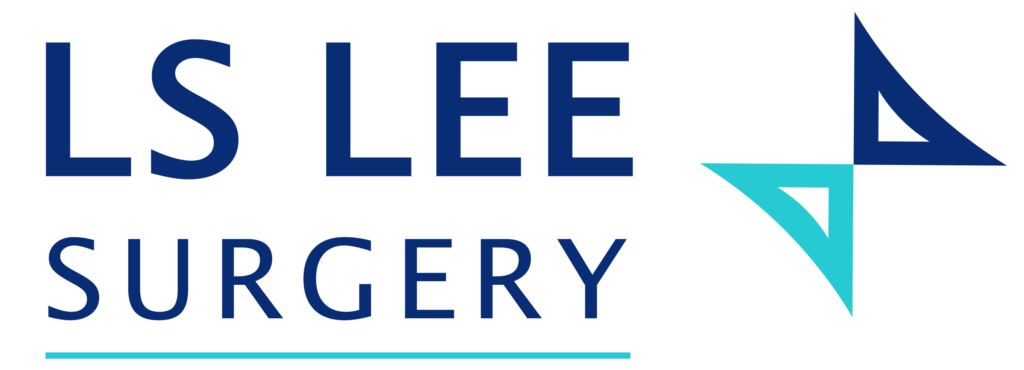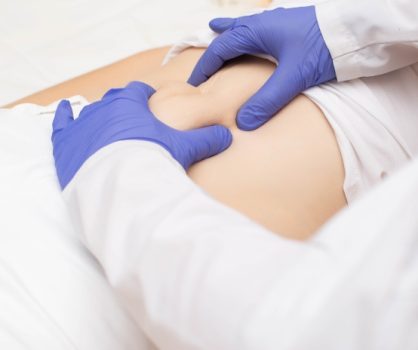Hernia Surgery
Conditions:
A hernia is a condition wherein organs push through a weak spot in the muscle or tissue, causing the organ to protrude beyond its position in the body. Hernias can be of various kinds, depending on the organ in question and the location of the hernia. The most commonly known hernias are as follows:
Inguinal Hernia
The most common kind, it occurs when tissue, such as part of the intestine, protrudes through a weak spot in the abdominal muscles. The resulting bulge can be painful, especially when you cough, bend over or lift a heavy object. If left untreated, the size of the protruding intestine might get bigger and become strangulated leading to the reduction of blood flow to surrounding tissue.
The most common kind, it occurs when tissue, such as part of the intestine, protrudes through a weak spot in the abdominal muscles. The resulting bulge can be painful, especially when you cough, bend over or lift a heavy object. If left untreated, the size of the protruding intestine might get bigger and become strangulated leading to the reduction of blood flow to surrounding tissue.
Femoral Hernia
Usually occurs when fatty tissue or a part of your bowel pokes through into your groin at the top of your inner thigh. It pushes through a weak spot in the surrounding muscle wall (abdominal wall) into an area called the femoral canal. Femoral hernias are associated with a high risk of complications if surgery isn’t performed. Part of the bowel could become “trapped” in the gap…
Usually occurs when fatty tissue or a part of your bowel pokes through into your groin at the top of your inner thigh. It pushes through a weak spot in the surrounding muscle wall (abdominal wall) into an area called the femoral canal. Femoral hernias are associated with a high risk of complications if surgery isn’t performed. Part of the bowel could become “trapped” in the gap…
Umbilical Hernia
Occurs when part of your intestine bulges through the opening in your abdominal muscles near your belly button (navel). Umbilical hernias are common and typically harmless. Umbilical hernias are most common in infants, but they can affect adults as well. Surgery is recommended for most adults with an umbilical hernia because the hernia is unlikely to get better by itself…
Occurs when part of your intestine bulges through the opening in your abdominal muscles near your belly button (navel). Umbilical hernias are common and typically harmless. Umbilical hernias are most common in infants, but they can affect adults as well. Surgery is recommended for most adults with an umbilical hernia because the hernia is unlikely to get better by itself…
Incisional Hernia
Occurs through a previously made incision in the abdominal wall, i.e. the scar left from a previous surgical operation. Midline incisional hernias are more common than other sites. If left untreated, however, an incisional hernia can cause serious complications such as a bowel obstruction (resulting in severe pain, nausea or constipation) or intestinal strangulation.
Occurs through a previously made incision in the abdominal wall, i.e. the scar left from a previous surgical operation. Midline incisional hernias are more common than other sites. If left untreated, however, an incisional hernia can cause serious complications such as a bowel obstruction (resulting in severe pain, nausea or constipation) or intestinal strangulation.
Spigelian Hernia
The spigelian fascia is a layer of tissue that separates the two muscle groups at the front of your abdomen. When a slit-like opening occurs in this fascia, it’s called a spigelian hernia. This condition usually affects the intestines and omentum, a layer of tissue that lies over the abdominal organs. The caecum, the appendix, and other organs can also be affected by a spigelian hernia.
The spigelian fascia is a layer of tissue that separates the two muscle groups at the front of your abdomen. When a slit-like opening occurs in this fascia, it’s called a spigelian hernia. This condition usually affects the intestines and omentum, a layer of tissue that lies over the abdominal organs. The caecum, the appendix, and other organs can also be affected by a spigelian hernia.
The most common ones are inguinal and femoral hernias, followed by incisional and ventral ones. Hernias often occur due to organs pushing through weakened muscles of tissues, which can result from aging, as well as stress on the abdominal/groin regions due to pregnancy, physical exertion, frequent coughing, or constipation.
Hernias are most often characterised by a noticeable lump that can be pushed back inside or disappears when lying down (a.k.a reducible hernia). These lumps can also resurface when stress is put on the region through motions such as laughing, coughing, strained bowel
movement, or physical activity. Some other commonly observed symptoms of hernias can
include:
- Swelling in the scrotum/groin region
- Increasing pain in the hernia site
- Pain over the swelling while lifting
- Increasing lump size over time
- Dull aching sensation
- Sense of feeling full
- Obstructed bowel movement. i.e., abdominal bloating, unable to pass motion and vomiting.
A non-reducible hernia is also known as an incarcerated hernia. An incarcerated hernia is commonly associated with pain. It can lead to more dangerous sequelae, e.g., intestinal
obstruction and reduced blood supply to the intestine leading to bowel death (strangulated
hernia leading to bowel ischaemia). These complications of the hernia are a medical
emergency. The patient requires early medical attention and surgery to resolve the condition.
Treatment:
The diagnosis of an abdominal hernia is through clinical examination. In some instances, your doctor may use an ultrasound or CT scan to confirm the diagnosis.
Hernia Repair Surgery
Hernia repair surgery involves the surgical realignment of the bulging tissues by pushing them back into its correct position. In the process, the weakened surrounding connective tissues are also restrengthened to prevent possible relapse of the hernia, either with stitches or using a supportive mesh.
Hernia repair surgery involves the surgical realignment of the bulging tissues by pushing them back into its correct position. In the process, the weakened surrounding connective tissues are also restrengthened to prevent possible relapse of the hernia, either with stitches or using a supportive mesh.
Laparoscopic Surgery
Laparoscopic surgery is a minimally invasive surgery wherein a telescope-like apparatus (laparoscope) is inserted into a minor incision in the body, and is then used as a gateway to perform the necessary surgical amendments in the body, without the need for larger incisions on the body.
Laparoscopic surgery is a minimally invasive surgery wherein a telescope-like apparatus (laparoscope) is inserted into a minor incision in the body, and is then used as a gateway to perform the necessary surgical amendments in the body, without the need for larger incisions on the body.
Robotic Surgery
Robotic surgery is a new technology that allows the surgeon to perform the necessary surgery through the remote controlling of a robotic equipment. Similar to a laparoscopic surgery, a robotic surgery also involves the use of a laparoscope, which is inserted into the body to carry out the surgical procedure.
Robotic surgery is a new technology that allows the surgeon to perform the necessary surgery through the remote controlling of a robotic equipment. Similar to a laparoscopic surgery, a robotic surgery also involves the use of a laparoscope, which is inserted into the body to carry out the surgical procedure.
Umbilical Hernia Repair
An umbilical hernia repair is a surgical procedure done to correct the hernia that occurs around the belly button. During this procedure, the surgeon creates incisions below the belly button, through which the hernia tissues are pushed back into its original position, and the connective tissues are strengthened.
An umbilical hernia repair is a surgical procedure done to correct the hernia that occurs around the belly button. During this procedure, the surgeon creates incisions below the belly button, through which the hernia tissues are pushed back into its original position, and the connective tissues are strengthened.
Tension-free mesh repair is the recommended method for hernia repair. It is performed by placing a mesh (net) to cover the hernia defect and allow the body to form a strong layer of fibrosis (scar) over the mesh to act as a strong wall. Depending on the severity of the hernia, it can be done via an open or laparoscopic approach.
Conventional open mesh repair is applicable for the patient when the hernia defect is big, with high risk of recurrence. We will discuss the appropriate approach with you during the consultation. The open hernia repair is also recommended for hernia complicated with bowel
ischaemia when bowel resection is required during the hernia repair.
A minimally invasive approach with laparoscopy can be a preferred method if suitable. It offers patients the benefit of minimally invasive surgery. For laparoscopic mesh repair of inguinal or femoral hernia, TAPP (Transabdominal preperitoneal) and TEP (Totally extraperitoneal)
approaches are the approaches. The laparoscopic IPOM (Intraperitoneal Onlay Mesh) technique will be used for umbilical and incisional hernias.
FAQs
It is imperative to look out for early signs and symptoms, if you suspect the presence of a
hernia. Some common symptoms are:
- Visible lump or bulge that appears during activity and disappears during rest
- Pressure or ache in the region when hernia appears
If you do not seem to be exhibiting any of the above symptoms, but suspect abnormalities, it
is always advisable to consult the doctor before any further complications.
If you happen to notice any of the telltale signs and symptoms of a hernia, you should consult a doctor soon. You should also seek medical attention if your condition seems to be worsening, with symptoms that seem to worsen.
Your need for a surgery would depend upon your condition and its severity. This can be accurately determined and diagnosed by the doctor upon thorough consultation. Depending on the results of your diagnosis, Dr Lee will be able to determine the type of treatment that would be best-suited for you.
Post-surgery, you may feel temporary effects of the treatment including weakness, soreness,
etc. You will be advised on the necessary aftercare steps to be taken to ensure a safe and sound recovery with minimal risks and side effects. It is imperative to follow your doctor’s instructions and do as advised, to prevent further complications.







